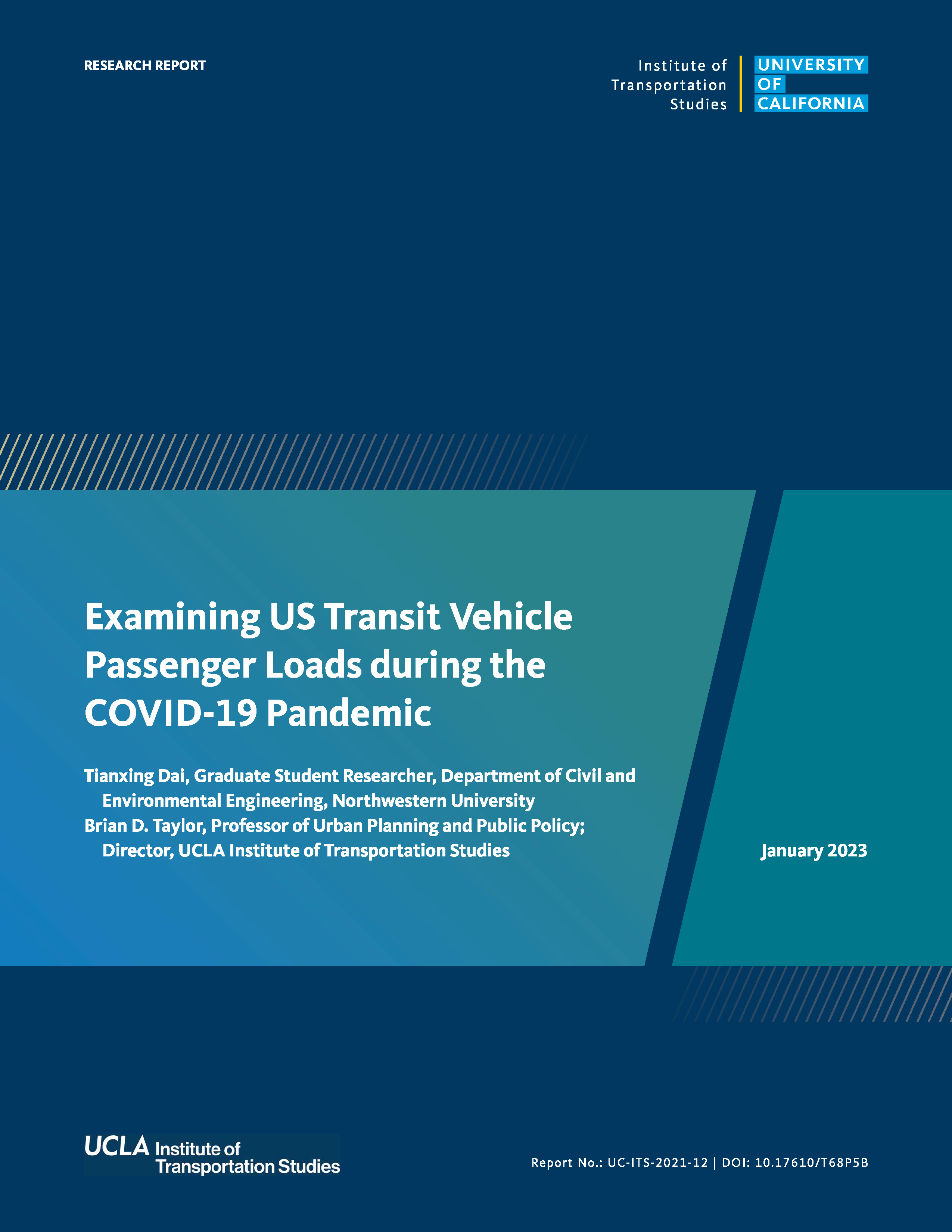Date: January 31, 2023
Author(s): Tianxing Dai, Brian D. Taylor
Abstract
Transit ridership plummeted at the onset of the COVID-19 pandemic, and what constituted passenger crowding contracted dramatically as well. We examine trends in average passenger loads and their correlates in a national sample of U.S. transit operators during the first year of the pandemic and find that passenger loads in high-transit-ridership areas and on the largest systems fell the most early on. Passenger loads were actually somewhat more likely to increase in places where COVID-19 rates were higher during the first year of the pandemic, which suggests that pandemic transit riders had fewer options to travel by other means.
About the Project
The global COVID-19 pandemic has shocked many economic and social systems. One of the most profoundly affected has been the public transit systems that serve cities large and small. Ridership initially plummeted, service has been cut, and in some cases slashed, and public health concerns are many, and finances are increasingly tight on public transit systems around the globe, in the U.S., and here in California. To understand how public transit is evolving in the pandemic, UCLA Institute of Transportation Studies researchers have looked into what transit service is changing, how it is changing, why it is changing, and for whom it is changing. The project has also examined how well the changes made affect the spread of COVID-19, and how transit can continue to safely serve the mobility needs of essential workers during the pandemic.


